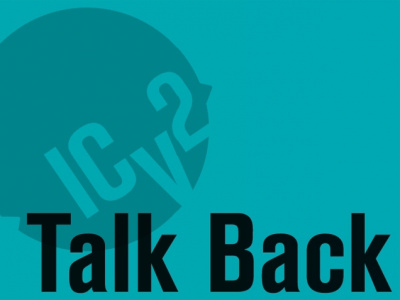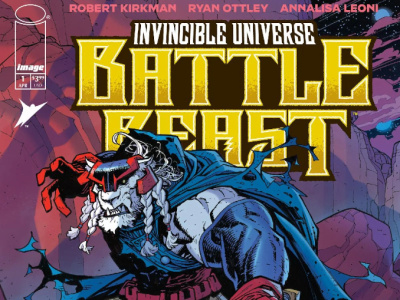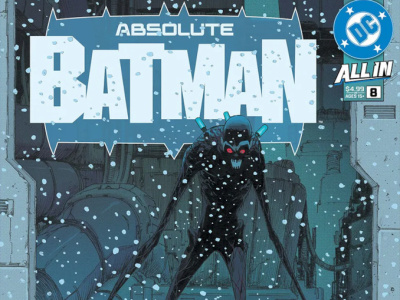Tony Caputo of Now Comics saw the recent columns by Steve Bennett on comic formats ('Confessions of a Comic Book Guy--Resolved: Comic Books Should Be More Expensive' and 'Confessions of a Comic Book Guy--Resolved: Comic Books Should Be Less Expensive'), and sent his thoughts on the issues:
Most comic book people I've known read their first comic book as a child. It was an impulse buy, asking (or begging) parents to buy it. Mine was a DC Super Special at a grocery store when I was about eight years old. What attracted me to it was not the content, but the same characters from a TV cartoon. My parents recognized the characters from the show as well, and they gave them enough comfort to buy it for me.
That first DC Super Special was the beginning of my love affair with what I call the 'interpersonal' experience of sequential art. It's not 'interactive' like video games, where you're actually molding a story - storyforming rather than storytelling. It's also not as linear as movies and television, where the storyteller requires that you sit back and witness his story unfold, at his pace, with his overall vision. Sequential art on the other hand, empowers the reader with the ability to contribute his or her own personality and tastes to the experience. Much like a prose book, which is left-brain dominant (logic, language, formula), it also stimulates our right-side of the brain (imagery, music and art). Readers determine the pace, the sound effects, the voices, the music, and depth, thus making it 'interpersonal.' Bottom line is that more people should enjoy sequential art better than films or television because they have the ability to contribute a part of themselves to the experience molding it into their 'perfect' experience.
While I'm sure most comic book industry people believe that it's possible to convert adults into sequential art and graphic novels, and I'm sure it's possible to a certain extent, it's more difficult to teach 'older dogs, new tricks.' It was within a year of publishing in the 1980s that I realized the direct market was owned by Marvel and DC (and still is), and it would be next to impossible (and very expensive) to convert the hordes of fans. Marvel and DC didn't recruit them in the direct market. They recruited most of them, as when I was young, on the newsstand, or the 'mainstream' outlets, with highly-recognized, flavor-of-the-month popular TV characters. Popular licensing makes every commercial, cereal box, TV show and T-shirt a potential advertisement for the comic book, just as the comic book becomes a billboard for the character.
You can build a comic book company publishing licensed titles, selling a mass of copies of someone else's character; a high-risk venture with a small net profit margin. However, it does include the most important intangible asset - the survival of the species. Unfortunately, saving the American comic book doesn't look good on the bottom line, as other investment opportunities can provide a solid 20% return on that money. That's the reality.
Steve is right about 'the incredible shrinking comic book periodical.' It was even more obvious when I saw this beautifully rendered Fantastic Four comic book (6 5/8' x 10'), at Blockbuster Video, lost among the seemingly giant, square-bound magazines. It should've been the size of the Mohammad Ali versus Superman comic book. Do you remember seeing that on the newsstand? Neal Adam's beautiful artwork outshined even the babes on the fashion magazines. I'm sorry, but when you're not on a 'comic book rack,' stuffing a comic book with the magazines doesn't help the perceived value. Yet another wonderful opportunity to introduce new readers to sequential art and what do we do? Show them the 'incredible shrinking comic book periodical' - stuffed with those annoying subscription cards.
Doesn't anyone else see the correlation between half the number of comic books sold in 2004 compared to 1987 (see whitepaper analysis) and half the number of direct market comic shops? This market survives on cash flow from monthly periodicals. Joe Krolik of Comics America reiterated the fact that it's unique to comic books and a necessity of survival as without the (somewhat) guaranteed monthly revenues, a comic shop would be nothing more than an independent book store. Producing monthly serialized graphic novels or manga would be a great solution, but what of the increased production costs and investment? Steve makes a comparison between a 32-page $2.25 Betty & Veronica comic and a 122-page, $4.99 W.I.T.C.H. graphic novel. The production of the Betty & Veronica comic book probably cost about $2000 - $3000US, with the printing and shipping (assuming it's still on the newsstand) of about $10,000US. A 122-page graphic novel, conservatively, would cost up to seven-times (7X) the production costs and printing costs. Depending on the agreement, the publisher would be paid on consignment for both newsstand (for the Betty & Veronica comic book), or comic shops and bookstores (for the W.I.T.C.H. graphic novel), leaving the publisher at risk and in the hole for up to 7X the original investment. It's up to 7X the risk, times the number of graphic novel series produced.
Japan's manga culture exists because it's part of the culture. Children are born into manga, thus it's as acceptable, understood and enjoyed as any other visual storytelling experience. They watch their older brother, sister, or parents reading a book with sequential pictures. There's less of a marketing effort required, because they're sold on them before they ever read them. That is far from the truth in America.
That's wonderful to hear that Marvel is having success with their new mainstream initiative, but that's only going to help Marvel and not the comic book industry as a whole. Superheroes are a niche market. You won't find brother, sister and parents reading Spider-Man or X-Men around the breakfast table because manga's diversity makes for diversity in readership.
All the debate about a 'balance of content' or 'too dark' or 'lower price' is not as relevant as the fact that kids, the future consumers of our country, don't see comic books as anything but a byproduct for superheroes. I've heard 'oh, they still publish those?' more these days than ever.
When I was negotiating my contract with Warner Publisher Services for newsstand in 1988, they were very concerned about my $1.75 cover price as Marvel's and DC's was 75 cents. I told them the cover price reflected our quality (white paper, airbrushed coloring, etc), but all that was irrelevant. If someone wanted to buy The Real Ghostbuters, Speed Racer, The Terminator, whatever, they would have to pay $1.75 and they did. It's not the cover price that affects sales, because people don't buy logically. They buy emotionally. This is why 'selling fear' has become so popular in entertainment. Fear is the easiest emotion to tap. 'Okay, so they don't like our comic characters, so how about we scare them into reading comics! Draw them in like a roadside accident!' The fact is that if you want to attract the next generation of readers to comic books, the IP (intellectual property) library will change every five years as the latest 'hot property' gives way to the next. However, as I've mentioned in my whitepaper and in other articles and posts, there are no more comic book publishers, per se. There are only IP companies who publish comic books of their licensed characters to keep the billboards out there.
It's also important to reach potential new readers at an even younger age than two decades ago, because they can delve into video games, computers, Internet, and DVD as a toddler. When I was eight, there were no such animals. When I was publishing Slimer & The Real Ghostbuters, writing the stories at a second grade reading level was deliberate to reach the kids who were just starting to read in school. However, our new interactive world introduces words to kids the moment they start working a graphical user interface (GUI). They become motivated to learn what the words mean in order to move around the interface, watch a movie or cartoon, and play games. My son started reading at age two, but it wasn't because he read comic books, it was from 'playing' on the old Macintosh computer I gave him. He learned his geometric angles from Tony Hawk video games and every single car model known to man from Gran Turismo. The interactive GUI also provides both language and imagery, invigorating both sides of the brain. This is why I feel it's important to differentiate the entertainment experiences, and not just the products. Scott McCloud also states this in Reinventing Comics. Sequential art is the product, not the comic book (or graphic novel).
The reason I offer my Visual Storytelling workshops free is to spread this message to the younger generation. It's not a choice between sequential art or a video game of Spider-Man - why not both? If he or she likes the characters, they can now have a multitude of experiences with the character.
An interpersonal experience is unique to sequential art, but the characters are not.







